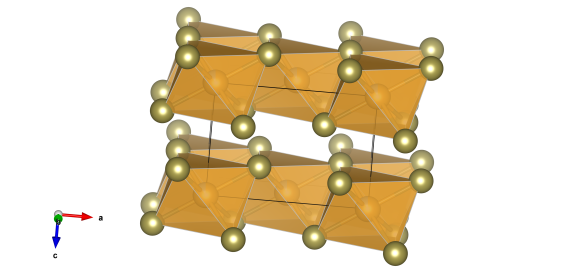Kalgoorlie where the streets are paved with gold – Calaverite
What does it look like?

Image generated by the VESTA (Visualisation for Electronic and STructural analysis) software http://jp-minerals.org/vesta/en/
What is it?
Like Arsenopyrite that we wrote about yesterday, Calaverite (or gold telluride) is often found in the same geological settings as gold. Although gold is more often found in 'native' forms, Calaverite is one of the more common gold-bearing ores found in Western Australia in mines such as that in Kalgoorlie. Calaverite contains, on average 42 % gold atoms, but looks much like pyrite. It was only identified in 1896 in the Kalgoorlie mine, and before this point had been removed as rubbish from the mine and used to pave the streets of the town. Like the other deadly minerals we've written about, Calaverite must be treated with caution, as tellurium, like arsenic, is very toxic.
Where did the structure come from?
The structure of Calaverite is actually quite a bit more complicated that the picture we've presented (which is #9011286 in the Crystallography Open Database). What we've pictured is just its average structure, as this atomic arrangement changes over time as well and is known as an incommensurate structure. Essentially, this means that forces within the crystal structure are pulling it away from being in the average positions that we've pictured – and calaverite is quite a classical example of such a structure.






